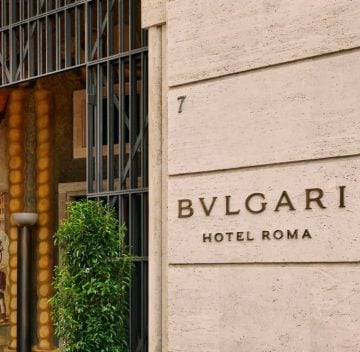When it comes to exporting wine, like in the stock market, the first rule is to diversify. To minimize risk and offset potential market fluctuations. The moment is delicate, in 2023 Italian wine exports worldwide slightly declined (-0.8%) after consecutive years of sustained growth. And the signals for 2024 are not very encouraging, with several key countries for Italian wine seeming to shift into reverse gear: the United States, China, and Japan. Now more than ever, it is necessary to raise the antennas and study the markets. Data in hand, India deserves all our attention.
Boom of imported wines
Speaking of numbers, in 2023, India surpassed China, becoming the most populous country in the world with an estimated population of 1.43 billion. And the data released by the Ministry of Commerce regarding imported wines is striking: the country imported wines worth $170.48 million from April to October of the current fiscal year, compared to $35.03 million for the entire financial year ending in March 2023. The growth is nearly 500%, something never seen in recent years. The surge in imports reflects a shift in consumer preferences, an increasingly wide range of fine wines on the market, and the growth of average income. While globally alcoholic beverage volumes slowed in 2022 (-1%), alcohol volumes in India increased by 12%: Ready to Drink beverages (+40%), beer (+38%), and wine (+19%), according to the IWSR study.
"India is one of the few major markets for alcoholic beverages in the world showing a constant growth momentum, which is expected to continue," said Jason Holway, senior research consultant at the institute, to The Drink Business. Along the same lines, Vishal Kadakia, founder of Wine Park, one of the most structured importers and distributors of wines online, commented: "Many things are going in favor of wines, and the market sentiment is very positive. Many new players are entering the wine sector. We are witnessing an increase in our business, and there is a lot of interest in good quality wines." The Indian wine market is evolving rapidly. Restaurants and hotels are significantly expanding their wine offerings. And while India remains the largest market for Scotch whisky in the world by volume, new generations are showing an interest in wine that has never been seen in the country.
A vast reservoir
According to a Technavio report, the Indian wine market is expected to grow by 30% in 2024. India, it is worth remembering, has a very young population, with an average age of under 30 (in China it approaches 40, in Italy 50...), with 500 million consumers of drinking age or older. And economically, the prospects are better than expected. Between 2021 and 2031, the country is expected to add 283 million more middle-class consumers, according to ICE 360 data. According to a government report, Indians consume 24 million liters of wine per year, few considering the size of the nation, but there is significant room for growth. From the ex-distillery or cellar price to the final consumer, the multiplier factor can be from 8 to 12 times for wines and from 15 to 20 times for spirits, depending on the individual State," notes Abhay Kewadkar of Tetrad Global Beverages, interviewed by Economic Times. Yet, even on this front, there are positive new developments in sight.
International fairs in India
Finally, there is talk of a relaxation of the country's complex regulatory framework and a reduction in high taxes, partly due to expected free trade agreements. In addition to the one with Australia, on March 10, India signed a free trade agreement with four European countries: Iceland, Norway, Switzerland, and Liechtenstein. The agreements also include a substantial reduction in alcohol taxes, a first sign of openness by the New Delhi government.
Vinod Giri, Director General of the Indian Confederation of Alcoholic Beverage Companies (Ciabc), stated that the reduction of customs duties to a fair and sustainable level and limited in time will support the domestic industry. According to the agreement documents, the concessions on wine customs duties are similar to those granted to Australia, with no concessions for wines costing less than five dollars. Wines priced between 5 and less than 15 dollars will see a reduction in duties from 150% to 100% in the first year, gradually decreasing to 50% over 10 years. For wines costing 15 dollars or more, the initial reduction in duties will move from 150% to 75%, then decrease to 25% after 10 years. Strong bets on the market are also being made by the major international fairs that have already marked the agenda for 2024. Vinexpo India will be held on September 18-19, and ProWein will respond always in Mumbai on November 8 and 9, 2024. Same location: the Jio World Convention Center.


 Education and economics: understanding Brazil's wine market
Education and economics: understanding Brazil's wine market Here are the secrets of one of the best Japanese restaurants in Italy
Here are the secrets of one of the best Japanese restaurants in Italy 'Falanghina del Sannio will soon become a DOCG'
'Falanghina del Sannio will soon become a DOCG' In Palermo there is one of the new best wine bars in Italy according to Gambero Rosso
In Palermo there is one of the new best wine bars in Italy according to Gambero Rosso Yannick Alléno: 'No crisis in fine dining, but the future lies in tradition'
Yannick Alléno: 'No crisis in fine dining, but the future lies in tradition'





